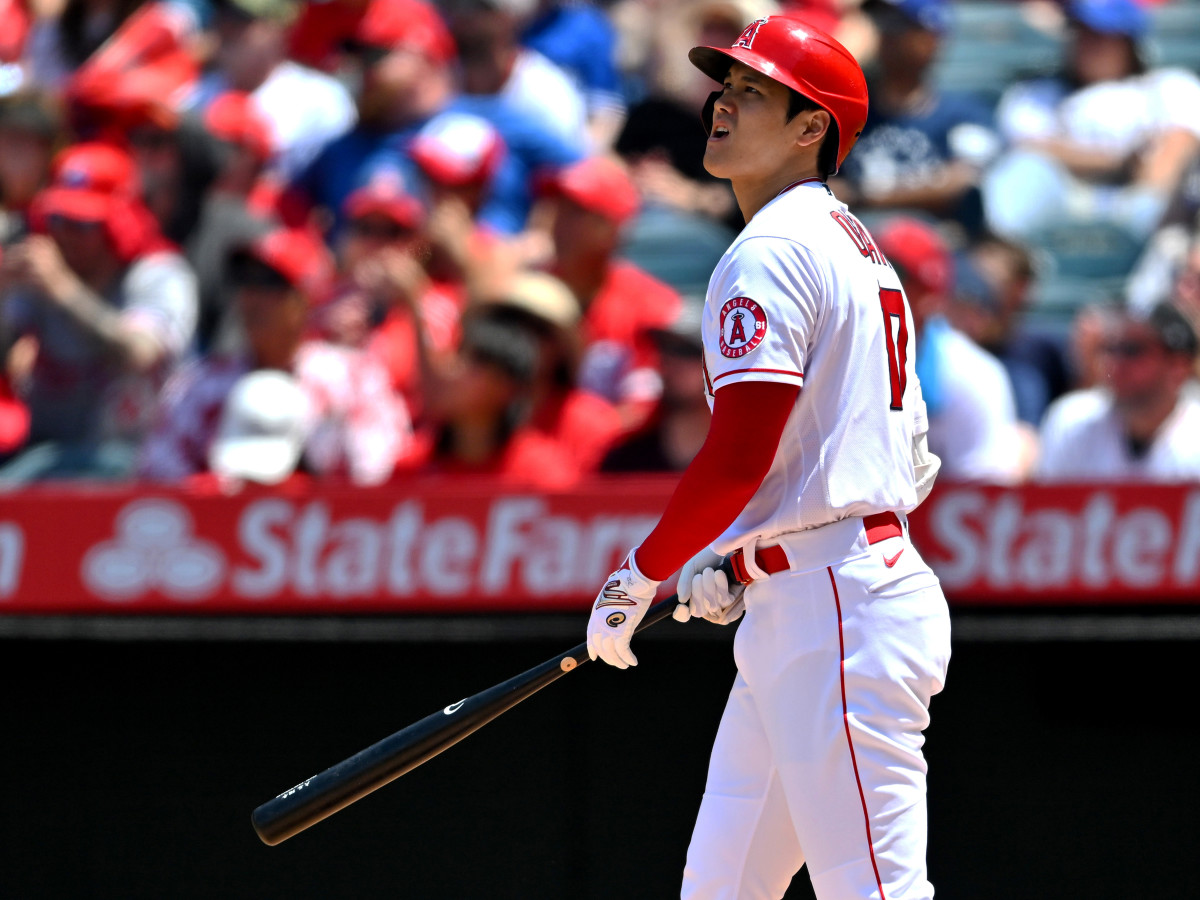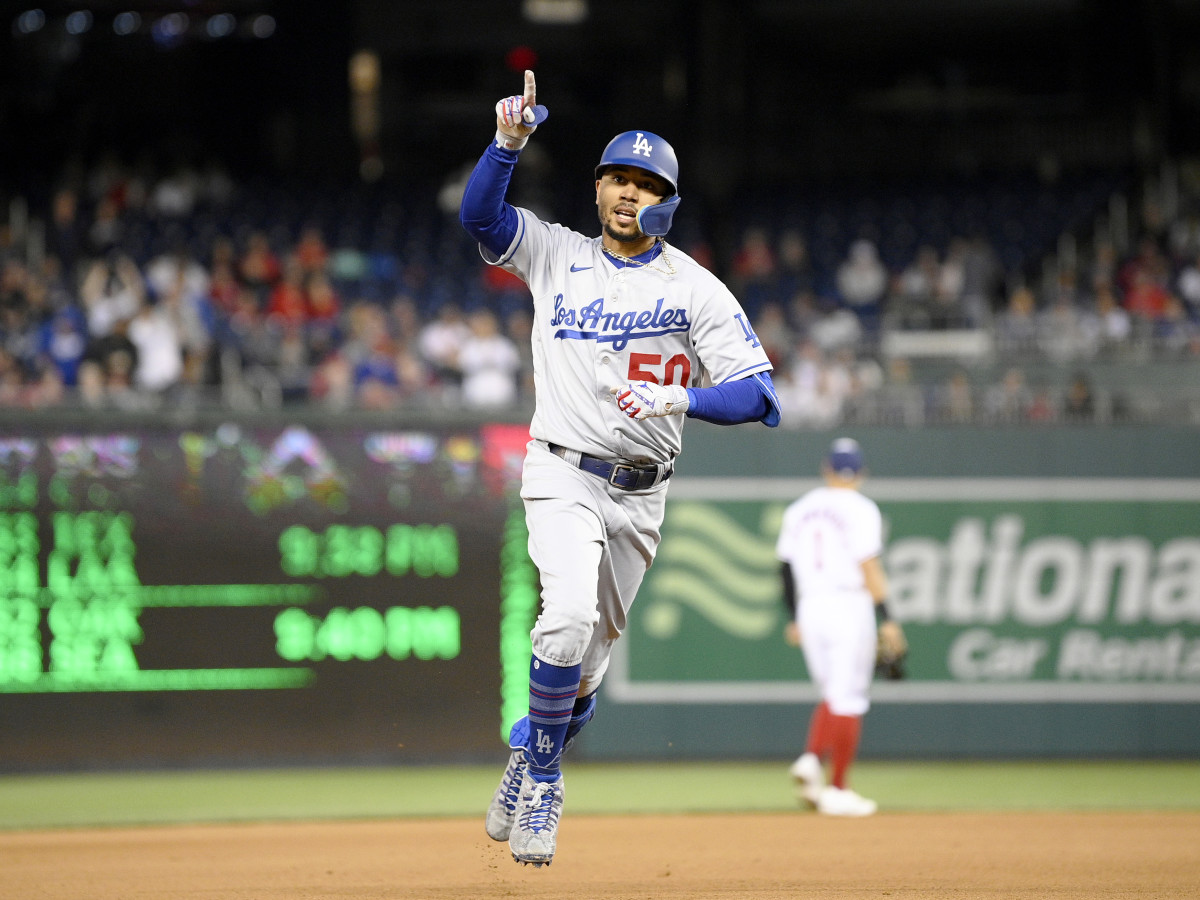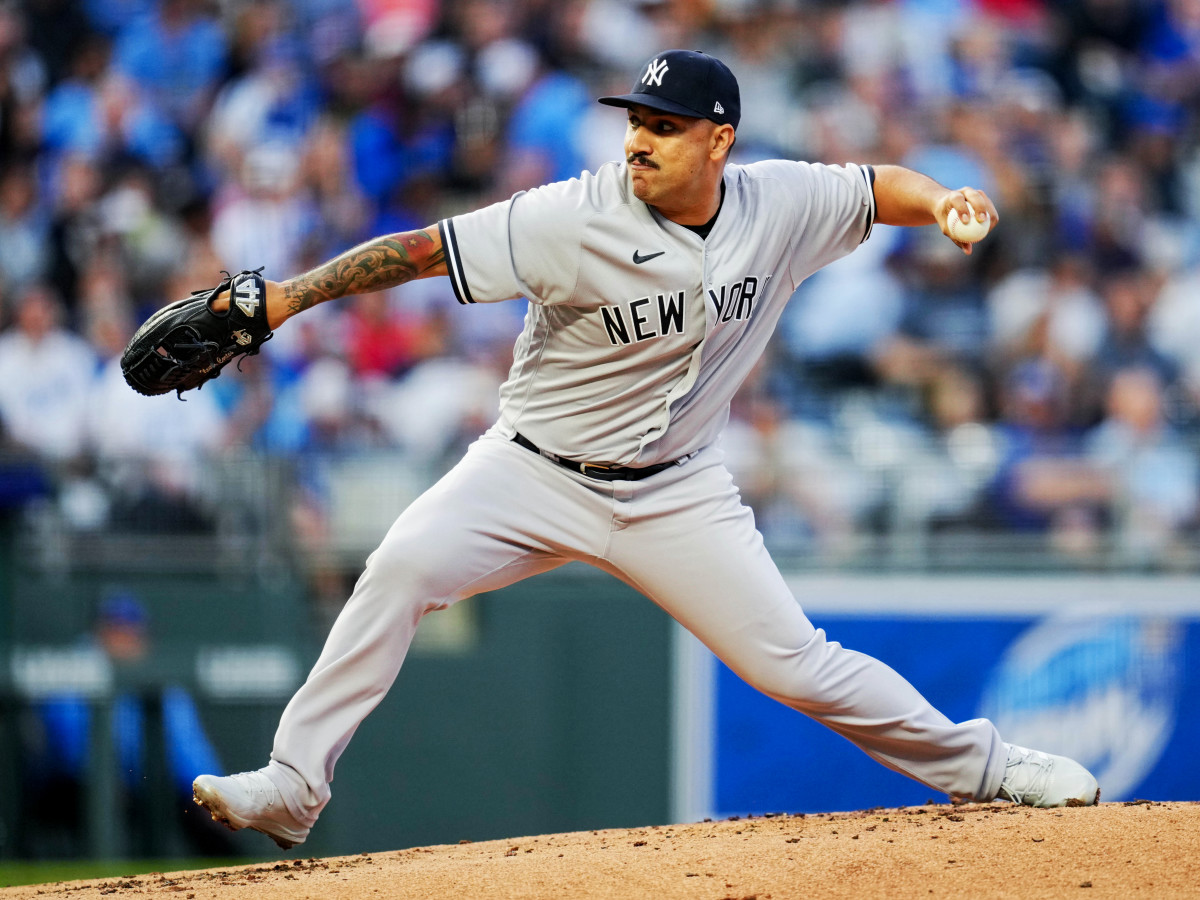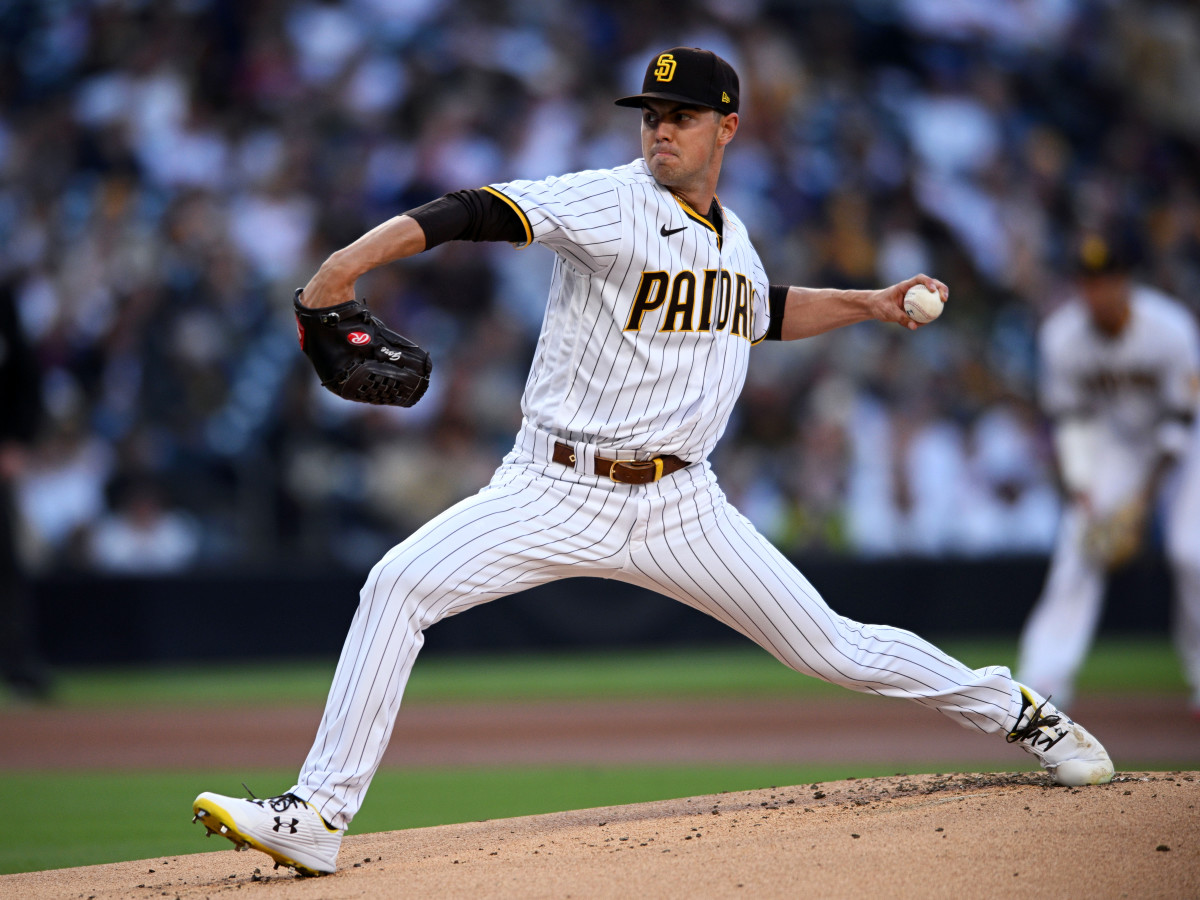Checking In on the MVP, Cy Young and Rookie of the Year Races
Welcome to The Opener, where every weekday morning during the regular season you’ll get a fresh, topical story to start your day from one of SI.com’s MLB writers.
It feels like the season has only just begun, but just like that, we’re two months down. As the standings begin to take shape, now feels like a good time for an awards race check-in. There’s plenty of time for new names to emerge in contention for individual accolades, but to this point, here’s the group that’s taken an early lead.

AL MVP
Nick Selbe: My preseason pick for this award was Shohei Ohtani. Even if the two-way star is a bit off his 2021 pace two months into the season, I’m not ready to move off that position. Ohtani doesn’t have to beat last year’s version of himself to be the most valuable player in the league this season. The effect of watching a single player shine in both facets of the game might not hold the same spectacle as it did the first time around, but that shouldn’t diminish how incredible this once-in-a-century singular talent has been.
Ohtani ranks solidly above average in adjusted OPS+ (128) and ERA+ (113), and his underlying metrics point to better days ahead. On the pitching side, his strikeout and walk rates are the best of his career. He’s throwing harder, and he’s getting more whiffs on his top two offspeed offerings (slider and splitter). There’s good reason to believe that the version of Ohtani we’ve seen through two months will improve considerably over the remaining four months. Even if he doesn’t, he’s still on pace for 36 home runs, 104 RBIs, 23 stolen bases, 110 runs scored, 144 innings pitched and more than 200 strikeouts. That sounds like an MVP to me.
Among the rest of the field, Ohtani has a pair of Angels teammates to contend with in Mike Trout and Taylor Ward. Ward doesn’t have quite enough plate appearances to qualify for the league leaders in rate stats, but he’s been the best hitter in the league to this point. Trout, meanwhile, is back to his old ways after missing most of last year with a calf injury. Aaron Judge is currently on a 60-home run pace, which is even more impressive considering the current state of the deadened baseball. If he can keep that up for a dominant Yankees team currently on pace for 112 wins, that would probably be too much for voters to ignore.
Five-man ballot: Ohtani, Trout, Judge, José Ramírez, Rafael Devers

NL MVP
Will Laws: This has been one of the best races so far, with a bunch of veterans making spirited runs at an award that’d give a massive boost to their Hall of Fame cases.
Nolan Arenado and Manny Machado raced out to an early lead by ranking first and second, respectively, in OPS at the end of April. But Arenado’s bat wasn’t nearly as strong in April, allowing for Mookie Betts to ride a ridiculously strong May to co-favorite status alongside Machado, who leads the NL in on-base percentage (.426), win probability added (2.3) and championship probability added (1.6). The Padres’ third baseman has raked even though pitchers have been avoiding him more without Francisco Tatis Jr. around, with Machado’s 35.9% rate of pitches seen in the strike zone ranking as the second-lowest mark among qualified NL hitters. FanGraphs has also graded him as a top-five NL hitter against fastballs, sliders, changeups and splitters—meaning, he’s crushing pretty much whatever you throw him.
I think Betts did enough in May to unseat Machado for now, though. The Dodgers’ right fielder leads the majors with 50 runs (11 more than second-place Aaron Judge) and paces all NL hitters in home runs (15), zone contact percentage (94.3%), swinging strike rate (5.1%). His .295 BABIP is 101 points lower than Machado’s (.396), indicating he has more staying power.
If this award was based solely on hitting, Paul Goldschmidt would be the choice as the leader in batting average (.352) slugging percentage (.626), OPS (1.049), wRC+ (195), hits (64) and total bases (114). But the contributions from Machado and Betts both on the base paths and in the field at more important defensive positions give them a slight edge on the pair of Cardinals in Goldy and Arenado, who still is the owner of the highest defensive bWAR in the NL.
Five-man ballot: Betts, Machado, Goldschmidt, Arenado, Bryce Harper

AL Cy Young Award
NS: Is there a more surprising group of awards front-runners than this? Precisely zero people would have figured that, two months into the season, Nestor Cortes Jr. and Martín Pérez would be anywhere near this discussion. But Cortes has been the ace of the Yankees’ staff, while Pérez is in the middle of a mid-career breakout that would rank among the most improbable in recent memory if he’s able to sustain it.
Cortes uses a mostly three-pitch mix—and has some fun with his delivery—to keep opposing hitters off balance. Neither his fastball nor his cutter has much oomph on them, but they look so similar coming out of his hand that batters struggle to anticipate where the pitches will end up. With an expected batting average against of .199, there hasn’t been anything fluky about his production so far.
Pérez, meanwhile, had a 4.71 ERA and 4.54 FIP in more than 1,100 career innings before the start of this year, and hadn’t posted an ERA under 4.30 since 2013. Through nine starts, the Rangers’ lefty has yet to allow a home run and has a career-best 6.4% walk rate. He’s upped the usage on his sinker and generated tons of ground balls and weak contact.
Still, I have Rays ace Shane McClanahan ahead of Pérez to this point, as the lefthander has simply been overpowering through his first nine outings. Kevin Gausman has proven every bit worth his mammoth contract for the Blue Jays, while Astros righthander Justin Verlander appears to be back to his old ways after recovering from Tommy John surgery. This race should be a fun one.
Five-man ballot: Cortes, McClanahan, Gausman, Pérez, Verlander

NL Cy Young
WL: This is an extremely crowded field to make out a ballot of five, which is to be expected with most starting pitchers having made only, at most, 10 appearances so far. But the more you dig into the statistics, the more you realize Corbin Burnes has been the most dominant pitcher in the senior circuit.
Burnes uses his cutter 55.6% of the time and his curveball 19.9% of the time, which are both graded by FanGraphs as the most valuable offerings in their respective categories, to limit walks and rack up whiffs despite avoiding the strike zone like no other starting pitcher does (MLB-low 35.1% zone rate). His 63.8% contact rate is seven points lower than the NL starter closest to him, Miami’s Pablo López, with the gap between the two being larger than the gap between López and 19th-ranked qualified pitcher in the NL (Logan Webb). The 27-year-old also leads all NL qualified pitchers in WHIP (0.82), hits per nine innings (5.8), batting average against (.183), strikeout rate (31.8%), swinging strike rate (17.3%), called plus swinging strike rate (33.9%), and xFIP (2.67). He also ranks third with 2.2 bWAR, 1.5 fWAR, a 1.95 ERA and a 4.5% walk rate.
The one ding against Burnes, who won the 2021 NL Cy Young, is that he hasn’t faced a tough slate of opposing teams so far, with seven of his 10 starts coming against teams with below-average offenses by wRC+. But as long as Jacob deGrom has issues staying healthy, and Burnes does not, the Brewers’ ace is quite clearly the favorite to bring home this award.
Below him on the ballot, I’ve got San Diego’s Joe Musgrove, who leads the NL in fWAR (1.7) and an NL-low 60.7% zone-swing rate. Here, it’s worth noting the discrepancy between how Baseball Reference and FanGraphs calculate WAR. B-Ref uses runs allowed, while FanGraphs uses Fielding Independent Pitching. Musgrove’s 1.2 bWAR ranks 20th in the league. That said, I’m going to value FIP over runs allowed for now, because FIP isolates the outcomes a pitcher can control (strikeouts, walks and home runs) and typically is a better indication of a pitcher’s performance at this point in the season when sample sizes are smaller.
In third, it’s López and his NL-best 1.83 ERA, followed by NL FIP leader Zack Wheeler and MLB innings leader Sandy Alcantara, whose 2.3 bWAR ranks second, his 1.5 fWAR third and 2.00 ERA fourth. But you could’ve made solid cases for about 10 other guys.
Five-man ballot: Burnes, Musgrove, López, Wheeler, Alcantara

AL Rookie of the Year
NS: It’s early, but so far this is Jeremy Peña’s race to lose. The skilled shortstop was a highly regarded prospect coming into the season, but didn’t have quite the same fanfare as fellow AL rookies, Mariners center fielder Julio Rodríguez and Royals shortstop Bobby Witt Jr. To this point, he’s clearly outplayed them, acclimating himself to the major leagues at a rapid pace. Peña’s bat has surpassed what most expected of him, and his defense has been as excellent as advertised. Peña ranks first among qualified shortstops with six outs above average, and his 139 wRC+ is the fourth-best at the position.
Rodríguez struggled over the first month of the season, batting .206/.284/.260 in that span, but has really caught fire in May. He has a .879 OPS with 10 extra-base hits and leads the league with 14 stolen bases, though he still strikes out quite a bit. He has perhaps the highest ceiling of any rookie in this class. Twins righthander Joe Ryan has been a much-needed steadying presence in their rotation, while Witt has the best chance to play his way higher up this list for the rest of the way. Also, don’t sleep on Orioles catcher Adley Rutschman, baseball’s top prospect, who made his MLB debut less than two weeks ago. He has some catching up to do, but his talent is undeniable.
Three-man ballot: Peña, Rodríguez, Ryan

NL Rookie of the Year
WL: What seemed like a done deal by the end of April has become a two-man race. Cubs right fielder Seiya Suzuki has cooled off considerably, while MacKenzie Gore of the Padres has not only inserted himself into the NL ROY conversation but also emerged as a dark horse for the Cy Young.
Gore is sporting an NL-best 2.35 FIP among pitchers with at least 40 innings pitched, a remarkable achievement propped up by his lone home run allowed, which came in his MLB debut. FanGraphs also grades his 95-mph fastball as the NL’s most valuable heater. The former No. 3 pick has yet to turn in a true stinker; he hasn’t allowed more than three runs in any of his eight appearances and has limited opponents to zero or one run in five of his seven starts. The 23-year-old could see some regression over the next few months. His 3.33 expected ERA is significantly higher than his actual mark of 1.71.
Suzuki had no initial issues adjusting to major league velocity after coming over from the KBO and setting the league on fire for the season’s first month. But pitchers seemingly figured out how to approach him once the calendar turned to May, when his OPS fell more than 300 points, from .934 to .617. Suzuki recorded zero multihit games after logging five in April, and after launching three homers in his first four games, the switch-hitter hasn’t gone yard since April 17. The 27-year-old, who hasn’t played since Thursday, was placed on the injured list with a sprained finger Sunday, giving Gore the opportunity to put some space between them.
Braves righty Spencer Strider, who went from Single A to the majors last year, made his first MLB start Monday after dominating in the bullpen to that point. He appears to have the stuff to stick in the rotation after debuting an effective changeup as his third offering to go along with his devastating fastball-slider combo.
Three-man ballot: Gore, Suzuki, Strider
More MLB Coverage:
• Jeremy Peña Is MLB’s Most Professional Rookie
• Welcome Back to the New Normal, Hitters
• Brett Phillips Is MLB’s Master of Fun
• Mike Trout, Baseball’s Best Hitter (Again)
• Adley Rutschman Gives Orioles Hope for a Brighter Future
